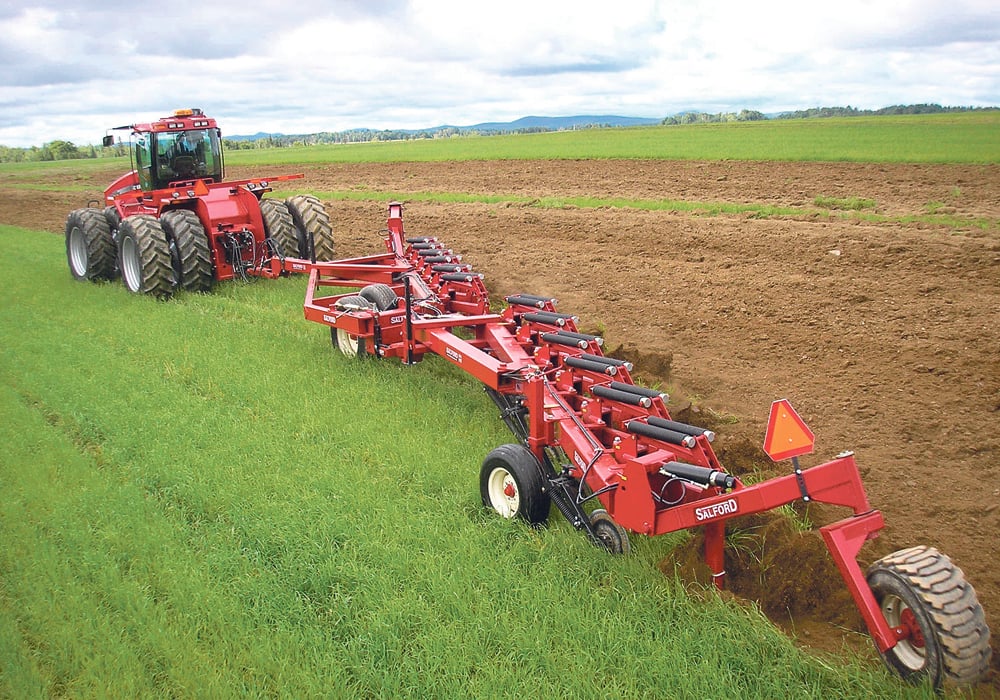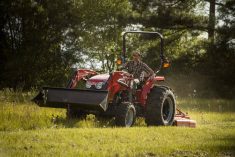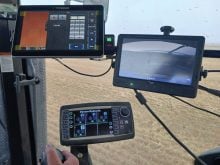Once vilified as the devil’s own tool, the moldboard has recently been vindicated as soil erosion problems persist
Steady gains in crop productivity do not reflect the ongoing loss of prairie topsoil. While crop residue may reduce water and wind erosion, “tillage erosion” is a deceptively hidden enemy.
Productivity gains are traced to better varieties, better crop protection products, better fertility and vastly improved implement technology and field management capabilities, says University of Manitoba soil scientist David Lobb.
Speaking at Crop Connect 2019 in Winnipeg, Lobb said financial losses due to soil erosion have actually increased since the 1970s. However, that cost is disguised by gains in all the other aspects of crop production.
Read Also

Growing garlic by the thousands in Manitoba
Grower holds a planting party day every fall as a crowd gathers to help put 28,000 plants, and sometimes more, into theground
“The value of crop production has increased. We’re growing higher yielding, higher value crops, but we’re doing it on more eroded land,” said Lobb.
“We’re conducting tillage operations today that are more erosive than the old moldboard plow ever was. On large areas, 15 to 30 percent of cultivated landscapes experience severe tillage erosion on the order of 20 to 100 tonnes per hectare (nine to 45 tons per acre) in one year.
“Within some landscapes, tillage erosion causes more soil redistribution than wind and/or water erosion. The degradation is increasing. More farm fields are suffering the loss of topsoil. This is a result of progressive tillage erosion.”
Lobb said the concern over erosion was pacified by the move to zero till. Farmers and researchers alike felt that seedbed preparation and low disturbance seeding would put an end to wind and water erosion, but low disturbance turned out to be not as low as people wanted it to be. In his presentation at Crop Connect, Lobb said every new ground-engaging tool that has been devised still caused tillage erosion.
“The moldboard plow has been vilified in agriculture as the major source of our agricultural problems with respect to soil and water conservation. In actual fact, any implement we have that moves soil will create wind and water erosion, and especially tillage erosion,” he said.
“Tillage erosion is a separate process from wind and water erosion. Tillage erosion is a function of how much soil you’re moving and how far you’re moving it. Obviously, you move more soil downhill than uphill, and that’s why we have eroded hilltops. Some of the ground-engaging tools we’ve developed, allegedly for soil conservation, actually move more soil than the moldboard plow.
“We’ve focused on keeping crop residue on the surface to protect from wind and water erosion. Things like the chisel plow and direct seeding help keep residue on the surface, but they do not stop tillage erosion. We’ve found that some implements drag so much residue that it causes more tillage erosion. Anytime you’re working the soil, even with a disc implement, you move more soil down than up. Gravity takes care of that. It’s a creeping process. So I think we have to take another look at the impact of our soil-engaging instruments.”
There are fields on the Prairies where the A horizon on the knolls has been totally removed by tillage erosion. That means the low-lying areas have benefitted from the high productivity topsoil. The overall field has lost productivity because of the eroded acres.
However, here’s the kicker: many knolls are so badly eroded that B horizon and even C horizon soil have created a non-productive crust over that beautiful deep A horizon soil at the bottom of the slopes. The challenge for farmers is to move soil upslope.
“More and more we’re seeing subsoil covering the topsoil in the lower slope position,” he said.
“The good soil at these low slope positions is two feet to four feet deep. The material from the hilltops is forming a cap over that deep topsoil. Farmers can still get seed to germinate and emerge in these areas, but over time, there will be a levelling effect on these fields.
“That subsoil material will become the material that caps off the whole field. It will become the root zone. Once that happens, you run into chemical issues and soil structure issues. It ties up phosphorus. It’s difficult for water to infiltrate. It’s difficult for roots to penetrate. The whole field is covered with material that had been subsoil. You’ll be farming into gravel or cement — carbonate rich material.
“At the moment, better yields in those low-slope, high-yield areas of the field offset the loss of yield on the hills. So people ignore the problem. But we can see that these non-productive spots are growing. We see it in satellite photos and aerial photos. The non-productive spots are gradually encroaching into the low slope areas that grow all the crop.”
About 15 years ago European companies such as Kverneland from Norway began importing swing bottom rollover moldboard plows. These plows have two gangs of shears, mounted 180 degrees opposite to each other on a heavy shaft. The gangs pivot hydraulically so the operator can engage the gang that turns soil to the left side or engage the gang that turns soil to the right side.
“By using one set of shears or the other, the operator can always throw the furrow up slope rather than down slope. Over time, you will move enough soil up slope to increase productivity on the eroded hills,” Lobb said.
These are definitely not your grandfather’s plows. Historically, with conventional moldboard plows, farmers typically would throw the furrows down slope so they lay flatter. That creates a smoother surface but tremendous tillage erosion. On the other hand, farmers in water deficient areas learned long ago to always try throwing the furrow upslope to catch water.
“You can’t make this work in all areas,” he said.
“You need big expansive hills with big rolling slopes like they have in Kansas. They do this a lot in that really hilly land out in Idaho and Washington state. They buy the swing bottom plows out there. It’s more of a scoop than a normal moldboard plow shear. These scoops pivot on the hitch from side to the other side.”
Lobb said that historically in agrarian societies, farmers have always hauled eroded topsoil from the bottom of slopes to the tops. It’s a necessary tradition that dates back thousands of years. In China, for example, farmers used to haul the soil manually in baskets at the end of each growing season. In England, where farmers lease land, it’s written in the contract that soil must be returned to the tops of the knolls annually.


















